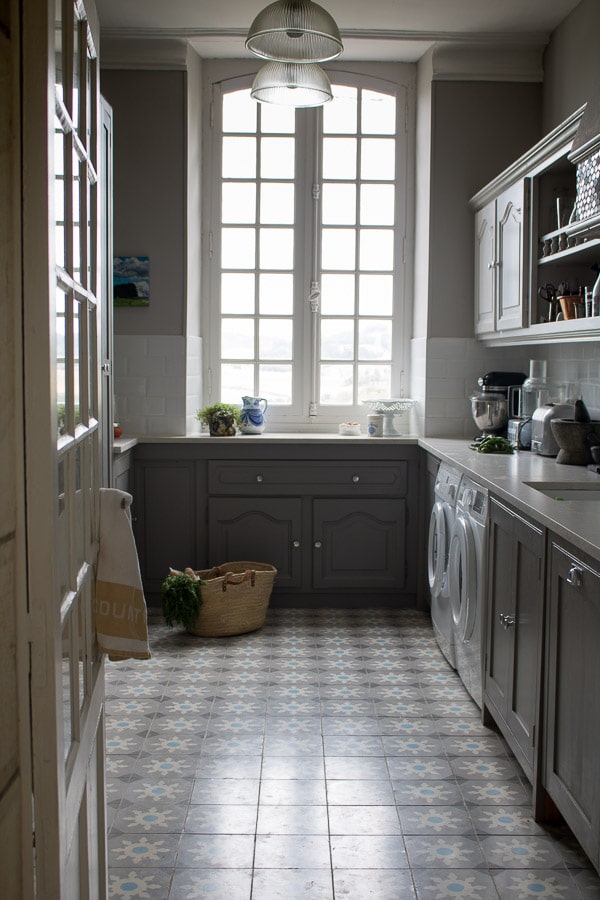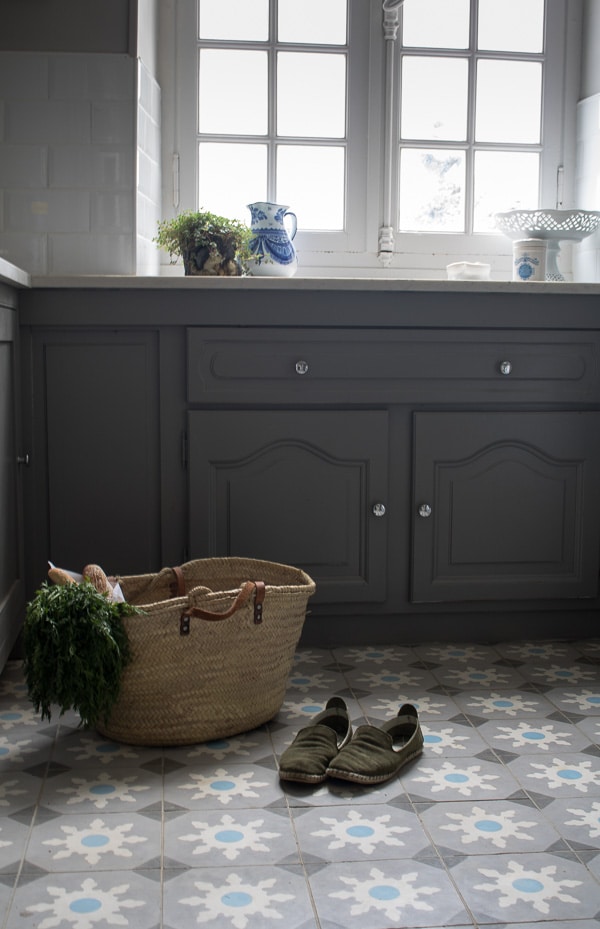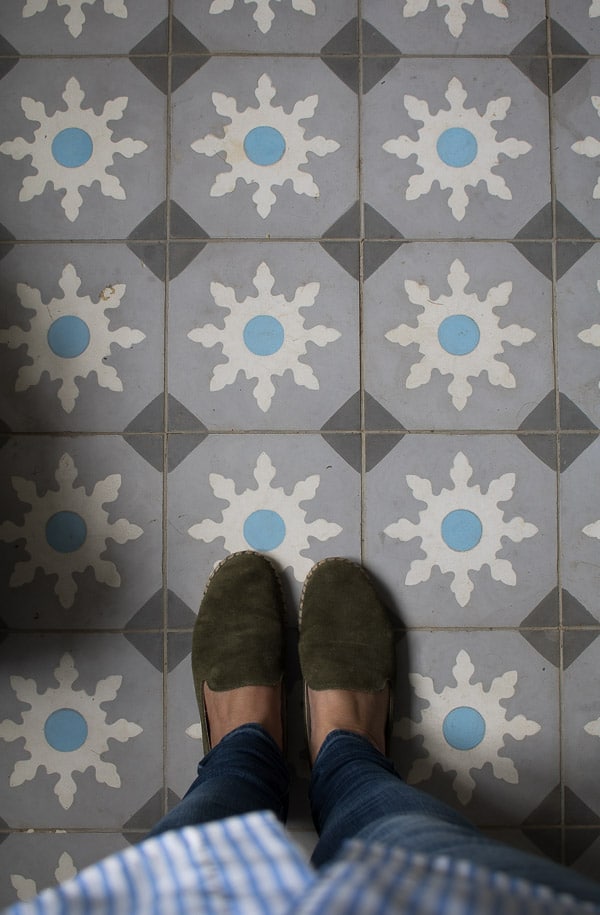
The Butler’s pantry at CM, with its custom made encaustic tiles from Alhambra Tiles
What’s an encaustic tile?
The word encaustic comes from the ancient Greek words ‘to burn in’. The Victorians used it to describe the process of pouring in the colours on the tiles surface; something they associated with the wax burning technique of enamel making. In actual fact, an encaustic tile doesn’t involve any burning at all, not even any firing.
Encaustic tiles are made of tinted cement, fine sand and ground marble and the coloured patterns are actually poured into the top 5mm, using a mould that’s placed on the base surface of the tile. Once poured, the tiles are left to dry outside for 28 days, which explains why they hark from sun-rich countries like Spain and Morocco.
I sourced the encaustic floor tiles for our butler’s pantry from Alhambra Tiles in London who are sadly no longer in business but I’ve since renovated other rooms using tiles from Maison Bahya in Paris.

So, here are my top 5 tips for sourcing and laying encaustic tiles:
1. Plan ahead! Anything that is individually made by hand, and air dried for 28 days, needs some careful forward planning. As the old adage goes, all good things come in time. Make sure you source a supplier and order well in advance. If its a bespoke custom designed tile, you may need to order as much as 4-5 months in advance.
2. Find the right person for the job.Make sure your tiler has had experience laying and sealing encaustic tiles. Ask your encaustic tile supplier for a list of recommended trades, they’re bound to know a select few that are experienced and well referenced. Ensure you allow the tiles time to dry completely before sealing them ( I use a clear matt tile sealer from Cupa Stone). If they are laid on a new cement floor, this can take up to 6 weeks— again, point 1—plan ahead!
3. Thickness matters. Plan for a thick tile— most encaustic tiles are 22mm thick! Alhambra also offers a thinner tile at 18mm, but this is still a thick tile in comparison to a standard interior ceramic tile of 7mm. Speak with your builder or tiler in advance so they can account for this when they set their floor levels. One of my biggest bugbears is annoying changes in floor level throughout a house. Always aim for a flush floor, so that regardless of the thickness of various floor materials in your home, your floor level remains the same throughout. This may require a deeper rebate for encaustic floor tile areas if you’re pouring a new slab, and if you’re laying tiles to replace existing, then your builder might need to remove the old tiles and adjust the levels accordingly.
4. Let them be the stars. Due to bold patterning and a huge range of colours, encaustic tiles can be rather greedy when it comes to taking centre stage in a room. Pattern is a wonderful thing, so let your encaustic floor be the star. Keep other surfaces neutral and simple. Think of encaustic tiles as the Shirley Bassey of the patterned tile world; you can’t have another belter doing back up, so keep the rest simple and the room will truly sing.
5. Cleaning.This should be done with a with PH Neutral soap such as Savon de Marseille soap. This is the traditional and most common way to clean cement floors. You should NEVER use bleach, acidic or alkali products (including strong detergents). These will damage the tiles. One of the upsides of patterned floors is they tend to be quite forgiving when it comes to day to day traffic. The image below shows our butlers pantry tiles after an average week of traffic with two dogs and 5 people—unwashed and unswept.

Due to their pattern, they’re really quite forgiving of debris and dirt.

Hey there! I’ve been following your weblog for some time now
and finally got the courage to go ahead and give you a shout out from
New Caney Texas! Just wanted to say keep up the fantastic work!
WOW just what I was looking for. Came here by searching for hayday game
Thanks for the post!